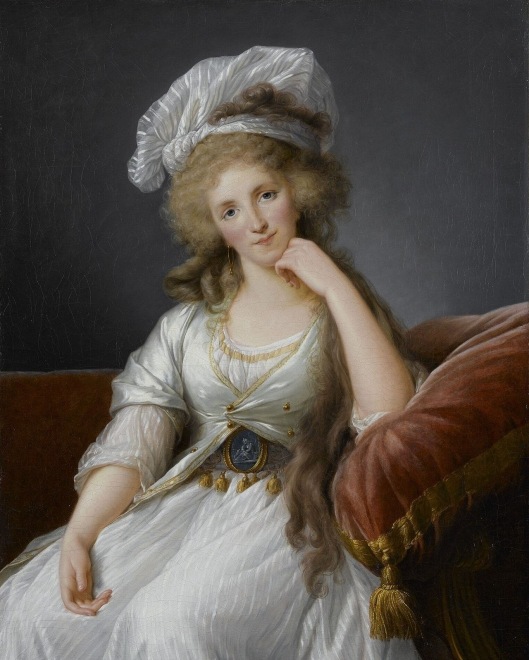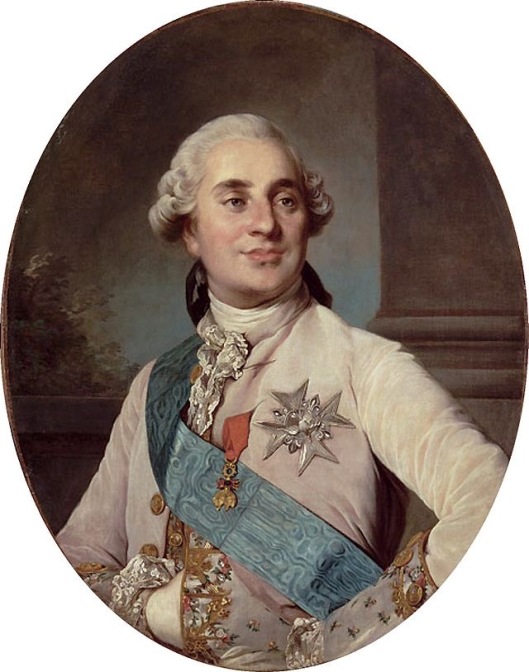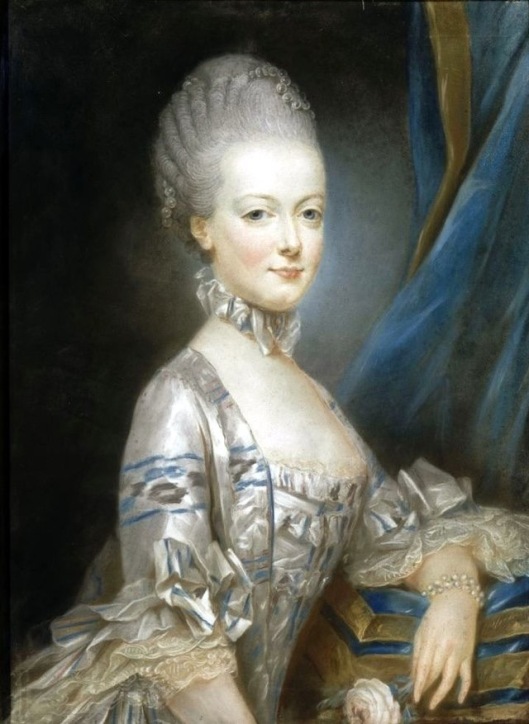Louis XVI (Louis-Augusté; August 23, 1754 – January 21, 1793) was the last King of France before the fall of the monarchy during the French Revolution. He was referred to as Citizen Louis Capét during the four months just before he was executed by guillotine.
Louis XVI was the son of Louis, Dauphin of France, son and heir-apparent of King Louis XV, and Maria Josepha of Saxony. Louis XVI’s mother was Maria Josépha of Saxony the daughter of Augustus III, Prince-Elector of Saxony and King of Poland, and Maria Josepha of Austria, an Archduchess of Austria, the eldest child of Joseph I, Holy Roman Emperor and Princess Wilhelmina Amalia of Brunswick-Lüneburg. She was named for her father.

On May 16, 1770, at the age of fifteen, Louis-Augusté married the fourteen-year-old Habsburg Archduchess Maria Antonia of Austria (better known by the French form of her name, Marie Antoinette), his second cousin once removed and the youngest daughter of the Holy Roman Emperor Franz I and his wife, the Empress Maria Theresa, Archduchess of Austria, Queen of Bohemia, Hungary and Croatia.
This marriage was met with hostility from the French public. France’s alliance with Austria had pulled the country into the disastrous Seven Years’ War, in which it was defeated by the British and the Prussians, both in Europe and in North America. By the time that Louis-Augusté and Marie-Antoinette were married, the French people generally disliked the Austrian alliance, and Marie-Antoinette was seen as an unwelcome foreigner.

Archduchess Marie Antoinette of Austria
When Louis Augusté’s father died in 1765, he became the new Dauphin. Upon his grandfather’s death on May 10, 1774, he assumed the title King of France and Navarre until September 4, 1791, when he received the title of King of the French until the monarchy was abolished on September 21, 1792.
The first part of his reign was marked by attempts to reform the French government in accordance with Enlightenment ideas. These included efforts to abolish serfdom, remove the taille (land tax) and the corvée (labour tax), and increase tolerance toward non-Catholics as well as abolish the death penalty for deserters.
The French nobility reacted to the proposed reforms with hostility, and successfully opposed their implementation. Louis XVI implemented deregulation of the grain market, advocated by his economic liberal minister Turgot, but it resulted in an increase in bread prices.
In periods of bad harvests, it led to food scarcity which, during a particularly bad harvest in 1775, prompted the masses to revolt. From 1776, Louis XVI actively supported the North American colonists, who were seeking their independence from Great Britain, which was realised in the 1783 Treaty of Paris. The ensuing debt and financial crisis contributed to the unpopularity of the Ancien Régime.
This led to the convening of the Estates-General of 1789. Discontent among the members of France’s middle and lower classes resulted in strengthened opposition to the French aristocracy and to the absolute monarchy, of which Louis and his wife Queen Marie Antoinette were viewed as representatives.
Tensions rose in France between reformist and conservative factions as the country struggled to resolve the economic crisis. In May, the Estates General legislative assembly was revived, but members of the Third Estate broke ranks, declaring themselves to be the National Assembly of the country, and on June 20, vowed to write a constitution for the kingdom.
On July 11, Jacques Necker, the Finance Minister of Louis XVI, who was sympathetic to the Third Estate, was dismissed by the king, provoking an angry reaction among Parisians.

Crowds formed, fearful of an attack by the royal army or by foreign regiments of mercenaries in the king’s service, and seeking to arm the general populace. Early on July 14, one crowd besieged the Hôtel des Invalides for firearms, muskets, and cannons, stored in its cellars.
That same day, another crowd stormed the Bastille, a fortress-prison in Paris that had historically held people jailed on the basis of lettres de cachet (literally “signet letters”), arbitrary royal indictments that could not be appealed and did not indicate the reason for the imprisonment, and was believed to hold a cache of ammunition and gunpowder. As it happened, at the time of the attack, the Bastille held only seven inmates, none of great political significance.
The crowd was eventually reinforced by mutinous Régiment des Gardes Françaises (“French Guards”), whose usual role was to protect public buildings. They proved a fair match for the fort’s defenders, and Governor de Launay, the commander of the Bastille, capitulated and opened the gates to avoid a mutual massacre. According to the official documents, about 200 attackers and just one defender died before the capitulation.
However, possibly because of a misunderstanding, fighting resumed. In this second round of fighting, de Launay and seven other defenders were killed, as was Jacques de Flesselles, the prévôt des marchands (“provost of the merchants”), the elected head of the city’s guilds, who under the feudal monarchy also had the competences of a present-day mayor.
Shortly after the storming of the Bastille, late in the evening of August 4, after a very stormy session of the Assemblée constituante, feudalism was abolished. On August 26, the Declaration of the Rights of Man and of the Citizen (Déclaration des Droits de l’Homme et du Citoyen) was proclaimed.
The Increasing tensions and violence and the storming of the Bastille, and the subsequent riots in Paris forced Louis XVI to definitively recognize the legislative authority of the National Assembly.
Louis XVI’s indecisiveness and conservatism led some elements of the people of France to view him as a symbol of the perceived tyranny of the Ancien Régime, and his popularity deteriorated progressively.
His unsuccessful flight to Varennes in June 1791, four months before the constitutional monarchy was declared, seemed to justify the rumors that the king tied his hopes of political salvation to the prospects of foreign intervention.
The credibility of the king was deeply undermined, and the abolition of the monarchy and the establishment of a republic became an ever-increasing possibility. The growth of anti-clericalism among revolutionaries resulted in the abolition of the dîme (religious land tax) and several government policies aimed at the dechristianization of France.
In a context of civil and international war, Louis XVI was suspended and arrested at the time of the Insurrection of August 10, 1792. One month later, the monarchy was abolished and the First French Republic was proclaimed on September 21, 1792.
Louis XVI was then tried by the National Convention (self-instituted as a tribunal for the occasion), found guilty of high treason and executed by guillotine on January 21, 1793, as a desacralized French citizen under the name of Citizen Louis Capét, in reference to Hugh Capét, the founder of the Capetian dynasty – which the revolutionaries interpreted as Louis’s surname.
Louis XVI was the only king of France ever to be executed, and his death brought an end to more than a thousand years of continuous French monarchy. Both of his sons died in childhood, before the Bourbon Restoration; his only child to reach adulthood, Marie Thérèse, was given over to the Austrians in exchange for French prisoners of war, eventually dying childless in 1851.












 Louis Philippe II d’Orléans (Father)
Louis Philippe II d’Orléans (Father) Louise Marie Adélaïde de Bourbon, Duchess of Orléans (Mother)
Louise Marie Adélaïde de Bourbon, Duchess of Orléans (Mother)






